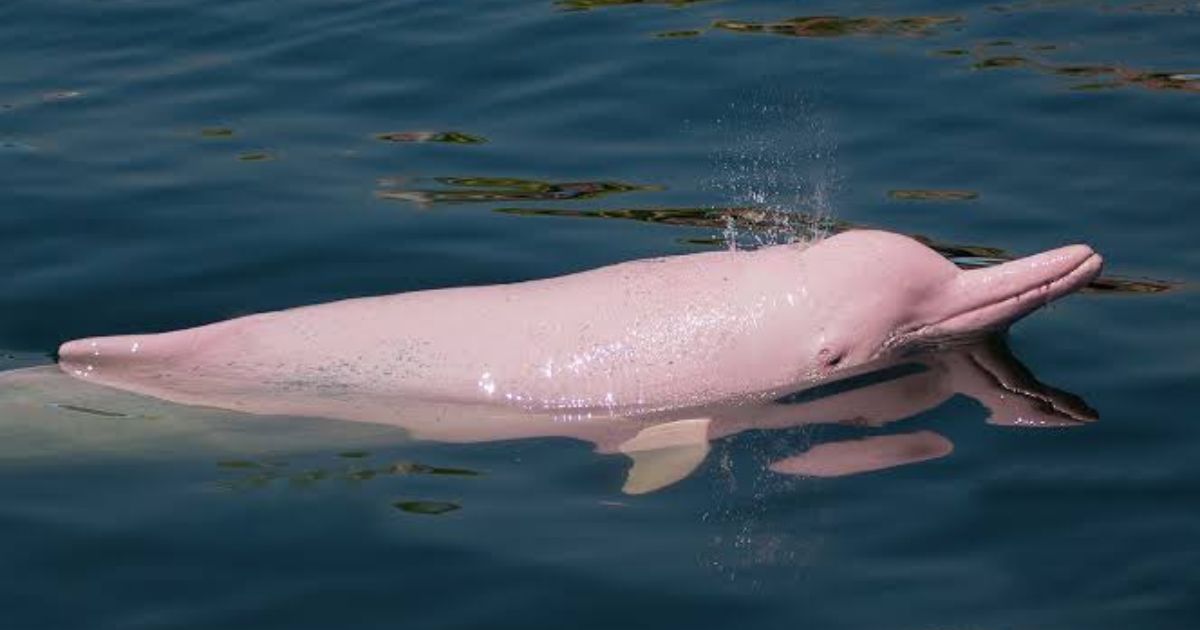The Amazon rainforest is home to one of the world’s most fascinating freshwater creatures—the pink river dolphin, scientifically known as Inia geoffrensis. These enigmatic mammals captivate researchers and nature enthusiasts alike due to their unique appearance and peculiar behaviors. One of the most intriguing aspects of this species is its ability to change color, which often leads to the question: Which pink river dolphin can change colour?
This article dives deep into the biology, habitat, behavior, and unique pigmentation of the Amazon pink river dolphin, answering that question with scientific insights and detailed analysis. We will explore the reasons behind their coloration, how it changes over time or due to external conditions, and the broader significance of this trait in their natural environment.
Understanding the Pink River Dolphin
Scientific Classification
- Common Name: Amazon River Dolphin / Pink River Dolphin
- Scientific Name: Inia geoffrensis
- Family: Iniidae
- Order: Cetacea
- Habitat: Freshwater rivers of the Amazon and Orinoco Basins
The pink river dolphin is the largest of all river dolphin species. It inhabits the murky waters of South America’s extensive river systems and is known for its gentle nature and extraordinary intelligence.
Physical Characteristics
Size and Shape
Pink river dolphins can grow up to 2.5 meters (8.2 feet) in length and weigh around 185 kilograms (408 pounds). Unlike their marine cousins, they have a long, slender beak and a flexible neck due to unfused cervical vertebrae. This flexibility helps them maneuver easily through flooded forests and around submerged obstacles.
Coloration
While many associate these dolphins with a pink hue, they are not born pink. Calves are typically gray at birth, similar to other dolphin species. The pink coloration develops over time and can vary depending on age, gender, water temperature, diet, behavior, and even emotional state.
Which Pink River Dolphin Can Change Colour?
Now to the core question: Which pink river dolphin can change colour? The answer lies in the Inia geoffrensis species itself. These dolphins are known for their variable pigmentation. Among them, adult males are particularly noted for their vivid pink coloration, and they can exhibit changes in hue.
Factors Contributing to Color Change
- Age
- Juvenile dolphins are gray.
- As they mature, their skin becomes pink due to the thinning of skin and increasing exposure of blood vessels.
- Gender
- Males tend to become more vibrantly pink than females.
- The coloration may be a sexual dimorphism trait to attract mates.
- Water Temperature and Sunlight
- Dolphins may appear lighter or darker depending on sun exposure and the temperature of the water.
- Cold water may cause blood vessels to constrict, reducing visible redness, while warmer waters may enhance it.
- Activity Levels and Emotional State
- Dolphins that are excited or engaging in active behavior can “blush,” increasing blood flow near the surface of their skin, leading to a temporary pinker appearance.
- Scarring
- Many adult males have battle scars from fights with other males.
- Scar tissue lacks pigmentation and can appear pinker against the gray skin.
Scientific Explanation
The color change is not like a chameleon’s adaptive camouflage but rather a result of physiological and environmental influences on the blood vessels close to the surface of their skin. Since their skin is very thin and lacks much melanin, blood flow plays a dominant role in their external coloration.
Myths and Folklore
The pink river dolphin is steeped in South American legend. Locals believe that these dolphins can transform into handsome men to seduce women, and some say the color changes are part of their magical nature. While these are myths, they show the importance of the dolphin’s appearance in regional culture.
Evolutionary Advantage of Color Change
Scientists believe the pink coloration, particularly in males, may play a role in sexual selection. Brighter-colored males may appear more dominant or desirable to females. Since these dolphins also live in murky waters, vibrant coloration could serve as a visual cue during mating seasons.
Visibility in the Wild
Even with their pink hue, these dolphins are not easy to spot in their natural, muddy river habitats. The occasional surfacing or dorsal fin breach may reveal their presence. This makes their fleeting color displays even more fascinating and rare to witness.
Habitat and Range
Pink river dolphins inhabit the rivers of:
- Brazil
- Peru
- Colombia
- Ecuador
- Bolivia
- Venezuela
They prefer slow-moving, murky waters where they can find abundant fish. These areas are often densely forested and become seasonally flooded, allowing the dolphins to swim among submerged trees and branches—something their flexible neck helps them navigate.
Behavior and Intelligence
These dolphins are highly intelligent and social. They have large brains relative to body size and display advanced behaviors such as:
- Tool use (e.g., using branches or plants for play)
- Problem-solving
- Cooperative hunting
- Vocal communication with clicks and whistles
Their curiosity also makes them friendly toward humans, and they are often observed playing around boats or investigating swimmers.
Threats and Conservation Status
Major Threats
- Habitat Destruction: Deforestation and dam building alter their habitat.
- Pollution: Mercury and other pollutants from mining and agriculture contaminate their environment.
- Fishing Nets: Accidental entanglement can result in injury or death.
- Poaching: In some regions, they are hunted for use as bait.
Conservation Efforts
- The IUCN Red List currently classifies the species as “Endangered.”
- Governments and NGOs are working to establish protected areas and raise awareness.
- Ecotourism programs help fund conservation while educating the public.
Scientific Studies on Color Change
Researchers have conducted field studies that track pigmentation over time using photography, direct observation, and even drone footage. A 2020 study published in Aquatic Mammals confirmed that individual dolphins could display changes in color based on time of day, activity level, and water conditions.
Thermal imaging has also revealed that pinker dolphins have higher surface blood flow, supporting the theory that temperature and blood circulation impact their coloration.
Pink Dolphin Species Comparison
There are other river dolphins globally, such as:
- Ganges River Dolphin (Platanista gangetica) – India
- Yangtze River Dolphin (Lipotes vexillifer) – China (possibly extinct)
- La Plata Dolphin (Pontoporia blainvillei) – South America
However, only the Amazon pink river dolphin exhibits the ability to change color in the way described. None of the others are known to develop such vibrant hues or show variation due to environmental or behavioral triggers.
Ecotourism and Awareness
Tourism focused on pink river dolphins has become popular in areas like the Amazon basin. Local guides offer dolphin-watching tours, and visitors often ask about their color-changing ability.
Guidelines for Responsible Viewing
- Maintain distance to avoid disturbing natural behavior.
- Avoid feeding or touching the animals.
- Support certified eco-friendly tour operators.
Conclusion
So, which pink river dolphin can change colour? The answer is the Amazon pink river dolphin (Inia geoffrensis), particularly adult males who develop vivid pink skin due to age, sex, blood flow, and environmental factors. This color is not static—it varies throughout the dolphin’s life and even within a single day, reflecting changes in behavior, temperature, and physiological condition.
This extraordinary trait adds another layer of fascination to an already captivating species. Beyond aesthetics, their color transformation provides insight into their biology, social structure, and interaction with their environment. However, their endangered status reminds us that such beauty must be protected through conservation, education, and respect for nature.










